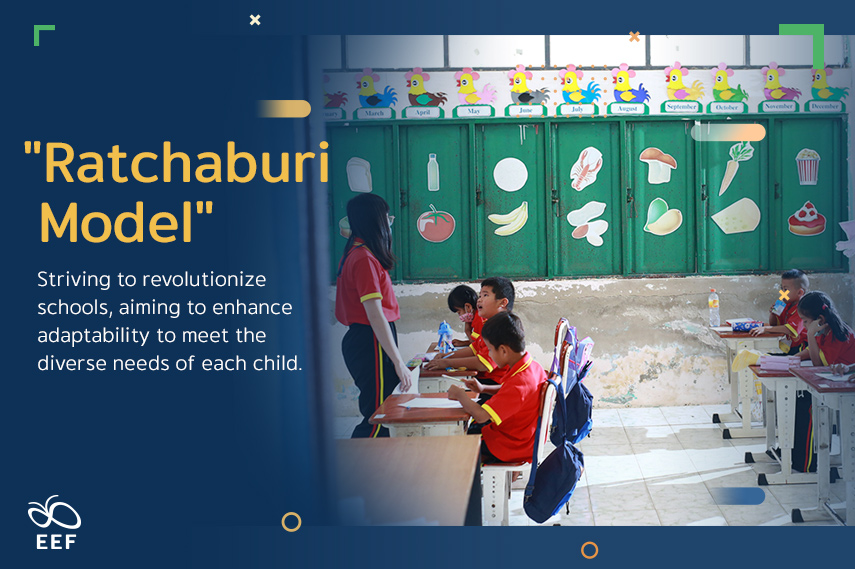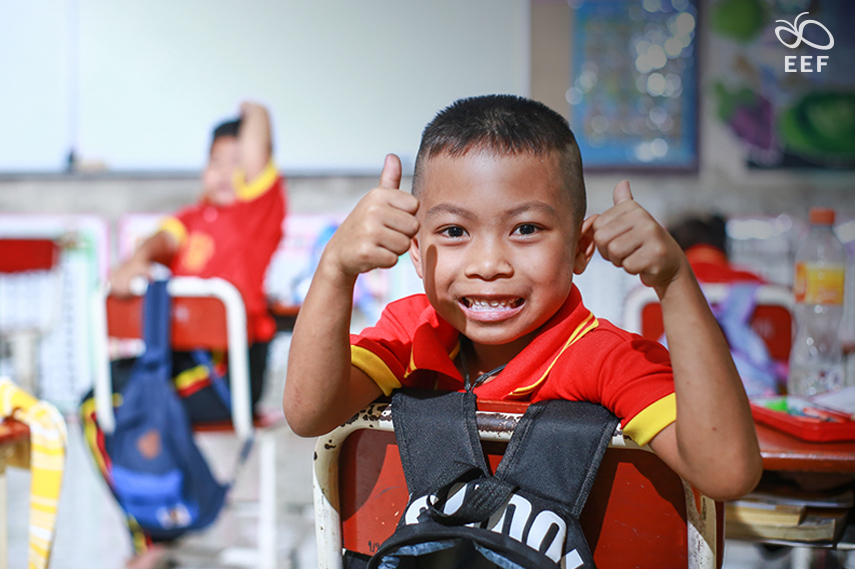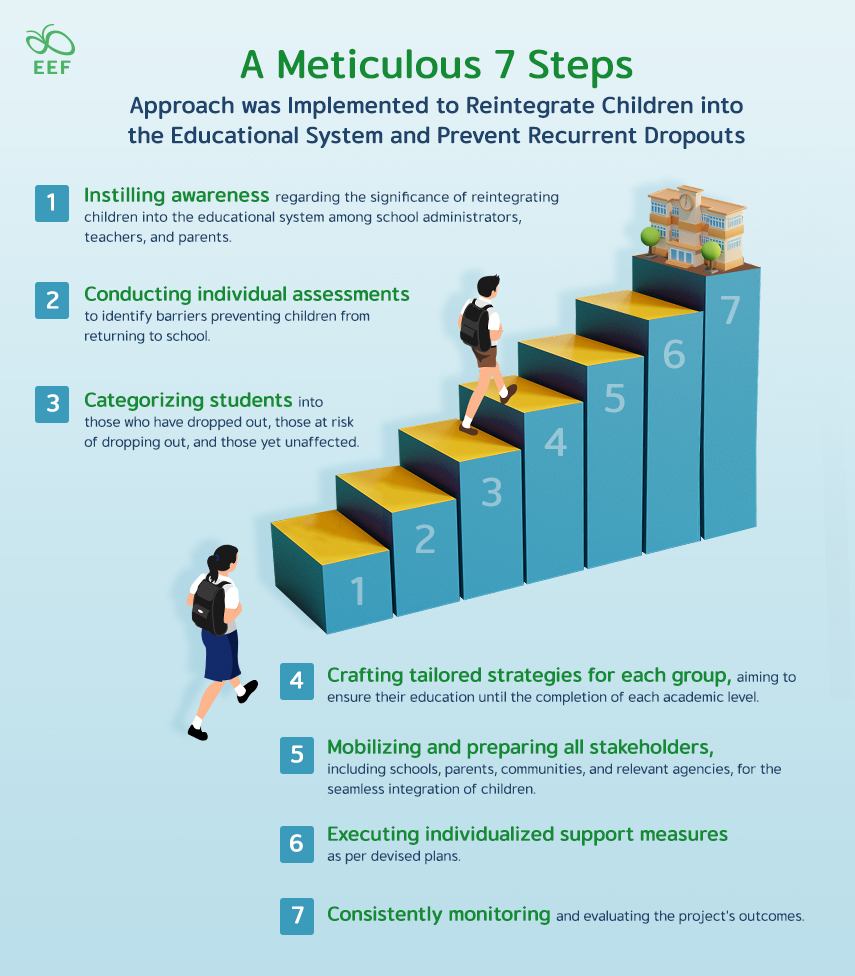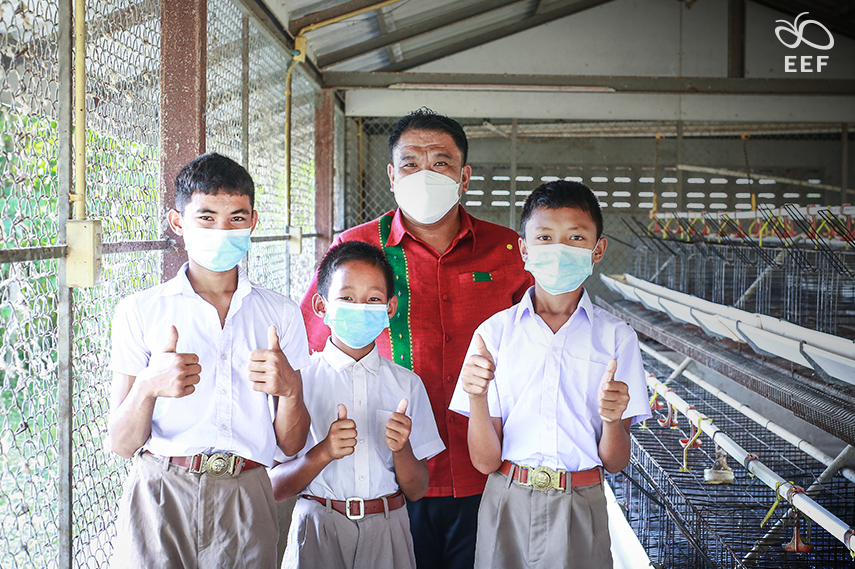
Over the past two years, the relentless grip of the COVID-19 pandemic has exacerbated educational disparities in Thailand, disproportionately affecting economically disadvantaged children and youth. Household incomes, particularly among the country’s bottom 15%, have sharply declined by 20%, amplifying vulnerability and dropout risks, driven by life necessities, delayed learning, and learning loss. The predicament has given rise to around 300,000 economically disadvantaged students in the poorest group, swelling to 1.2 million in the 2023 academic year. Coupled with 700,000 students in the poor group, the current scenario imperils over 1.9 million students nationwide, highlighting the pivotal role of the impending semester closure in addressing the looming risk of losing yet another generation of human resources to educational gaps. Collaborative efforts are urgently needed to establish a safety net, particularly for marginalized and underprivileged children.
In response to the protracted pandemic, the “Zero Dropout” initiative has emerged as a leading collaborative effort, involving the Suan Phueng district, the Regional Office of Primary Education in Ratchaburi District 1, the Equitable Education Fund (EEF) Thailand, Sansiri Public Company Limited, and King Mongkut’s University of Technology Thonburi (Ratchaburi Campus). It aims to eradicate educational disparities, particularly focusing on economically disadvantaged students, by preventing dropouts and fostering a future of joyful learning and holistic development. The initiative involves extensive data analysis, scholarship programs, and collaboration with local authorities. The ultimate goal is to reduce the number of dropouts to zero and address educational inequality nationwide, creating equal access to quality education for all. At the forefront of this initiative is the groundbreaking “Suan Phueng Model,” which has served as the cornerstone for addressing challenges faced by economically disadvantaged children in the district.

The “Suan Phueng Model,” rooted in extensive stakeholder dialogues, focuses on fostering vocational skills for children and youth grappling with income-related challenges, aiming to equip them with practical skills for future employment while addressing the specific needs of teachers and schools. It emphasizes the simultaneous need for reforms in creating opportunities and enhancing the overall quality of education, thereby fostering joyful, flexible learning systems and preventing recurring dropouts. The model envisions holistic development and self-sufficiency while urging swift and adaptive educational reforms to effectively address the escalating disparities in the educational system.
Championing the EEF’s ethos of “All For Education,” the “Suan Phueng Model” facilitates collaboration among public, private, and local entities, fostering a united front that comprises schools, communities, and parents. This collective effort aims not only to mitigate immediate challenges but also to establish sustainable solutions that would pave the way for a resilient and adaptive educational system. The success of the “Suan Phueng Model” has served as a catalyst for the extension and refinement of the Zero Dropout initiatives, leading to the emergence of the “Ratchaburi Model” as an innovative and transformative extension, effectively addressing the socio-economic challenges faced by students and contributing to the broader landscape of educational reforms.

Spearheaded by the “Ratchaburi Education Assembly,” the “Ratchaburi Model” seeks to revolutionize schools, making them highly adaptable to the diverse needs of every child. Through a profound transformation of the educational system into a flexible learning space, it seamlessly integrates three distinct systems along with a dedicated learning center into one school. The focal point is to systematically dismantle traditional school boundaries and thereby facilitate personalized education, finely tuned to individual needs.
This model exerts a profound and positive influence, particularly on underprivileged and marginalized groups within the educational landscape. Serving as a beacon of inclusivity, it caters to a diverse range of students facing unique challenges; this inclusive approach extends support to more diverse demographics, including homeless children, pregnant teenagers, children with disabilities, children with special learning needs, and children from ethnic minority backgrounds, among many others. Furthermore, the model goes beyond the mere physical establishment of schools; it establishes collaborative spaces that unite all stakeholders in education management. Not only does this redefine the conventional role of teachers, elevating them to the status of educational managers and facilitators, but it also fosters partnerships with the private sector. These collaborations open avenues for internships, hands-on experiences, and seamless access to digital learning platforms, ensuring that education becomes a dynamic and accessible experience anytime, anywhere.
The “Ratchaburi Model” seamlessly integrates key insights gleaned from the “Suan Phueng Model,” reinforcing its central mission of nurturing vocational skills and addressing income-related challenges. Guided by collaborative prowess, this model dynamically evolves, strategically adapting and refining approaches based on the rich experiences of its predecessor. This evolution is exemplified vividly through the transformation of schools into flexible learning spaces, where three distinct systems harmoniously converge —a testament to the innovative spirit sparked by the trailblazing forerunner. The intricate interplay between these models finds its nexus in a shared dedication to reducing educational disparities, fostering vibrant learning experiences, and preventing dropout risks. Their collective impact resonates powerfully within the broader scope of the “Zero Dropout” initiative, constructing a sophisticated and adaptable framework that propels educational empowerment to greater heights.

Addressing educational disparities calls for a comprehensive approach, and despite challenges such as inequitable budget allocation and a shortage of teachers and staff, small schools in remote areas are proactively adapting. Aligned with the philosophy of “Zero Dropout,” these efforts create opportunities for every child, preventing disengagement from the educational system in their respective regions and forging sustainable connections and collaborative efforts among households, communities, and schools to bridge the educational gap. The recently enacted Education Promotion Act underscores the significance of learner-centered education, breaking away from rigid school-based learning and aligning precisely with the educational needs of each learner, fostering a conducive environment for learning based on personal preferences and capabilities.
For children and youth residing in remote areas, education becomes a crucial gateway to employment, seamlessly blending knowledge acquisition with practical skills.

To reintegrate children into the educational system and prevent recurrent dropouts, a meticulous seven-step approach was implemented. This involves 1) instilling awareness regarding the significance of reintegrating children into the educational system among school administrators, teachers, and parents; 2) conducting individual assessments to identify barriers preventing children from returning to school; 3) categorizing students into those who have dropped out, those at risk of dropping out, and those yet unaffected; 4) crafting tailored strategies for each group, aiming to ensure their education until the completion of each academic level; 5) mobilizing and preparing all stakeholders, including schools, parents, communities, and relevant agencies, for the seamless integration of children; 6) executing individualized support measures as per devised plans; and 7) consistently monitoring and evaluating the project’s outcomes.
The transformative Zero Dropout initiative, spanning from 2022 to 2024 in Ratchaburi Province, serves as a model for nationwide educational empowerment. Collaborative efforts are ongoing to ensure the flexible implementation of this transformative initiative, with plans to expand its reach to encompass 25 provinces, including Mae Hong Son, Chiang Mai, Chiang Rai, Lampang, Nan, Phayao, Phitsanulok, Sukhothai, Khon Kaen, Nakhon Phanom, Nakhon Ratchasima, Roi Et, Surin, Ubon Ratchathani, Chonburi, Rayong, Trat, Sa Kaeo, Bangkok, Nonthaburi, Pathum Thani, Kanchanaburi, Ratchaburi, Songkhla, Surat Thani, Krabi, Yala, and Pattani.
Leveraging experiences and resources from diverse communities across these provinces, the initiative aims to forge links through multidimensional databases of out-of-school and previously unidentified children, establish robust referral systems, and reintegrate youth back into adaptable learning environments. The united effort seeks to dismantle barriers, eradicate educational disparities, and ultimately reduce the number of children dropping out to zero, providing tailored alternative pathways for individual circumstances and breaking the cycle of poverty for future generations.

Thailand’s commitment to overcoming educational disparities through the “Zero Dropout” initiative stands as a beacon of hope for vulnerable students. Fueled by collaborative efforts involving public, private, and academic sectors, transformative models like the “Suan Phueng” and “Ratchaburi” models are reshaping the educational landscape. The emphasis on inclusivity, personalized learning, and community engagement reflects a holistic approach to bridge gaps in the system. As the initiative expands to 25 provinces, it signals a nationwide commitment to eradicating barriers and providing tailored solutions for each child. Moreover, the integration of technology, innovative partnerships, and the dedication of leaders like Prime Minister Srettha Thavisin reinforce the pursuit of a future where no child is left behind. With a focus on sustainable, long-term effects, the “Zero Dropout” project emerges as a catalyst for systemic change, nurturing a high-quality human resource pool and paving the way for a brighter and more equitable future. Central to this mission is the EEF, dedicated to diminishing educational disparities through rigorous research, dynamic collaboration, and unwavering support for those in need.

